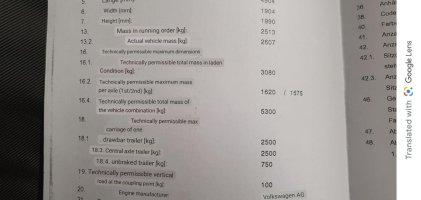B J G
Super Poster
Lifetime VIP Member
I always think that the T32 base should be offered as an option on the 4M with that extra weight capacity getting the payload back in line with 2WD models- but.
I'd say that in your intended use 4M would be fully justified with adjustments to what you carry to suit. eg I never fill the water tank as if travelling to a site a fresh supply is readily available. 5 litre bottle plus a few smaller one if required.
Four Season tyres would be essential for slipways.
If towing more than 750kgs trailer my Insurer, Safeguard, advised that the trailer isn't covered under the Cali policy, separate insurance required. You may know but just a heads up.
I'd say that in your intended use 4M would be fully justified with adjustments to what you carry to suit. eg I never fill the water tank as if travelling to a site a fresh supply is readily available. 5 litre bottle plus a few smaller one if required.
Four Season tyres would be essential for slipways.
If towing more than 750kgs trailer my Insurer, Safeguard, advised that the trailer isn't covered under the Cali policy, separate insurance required. You may know but just a heads up.
















